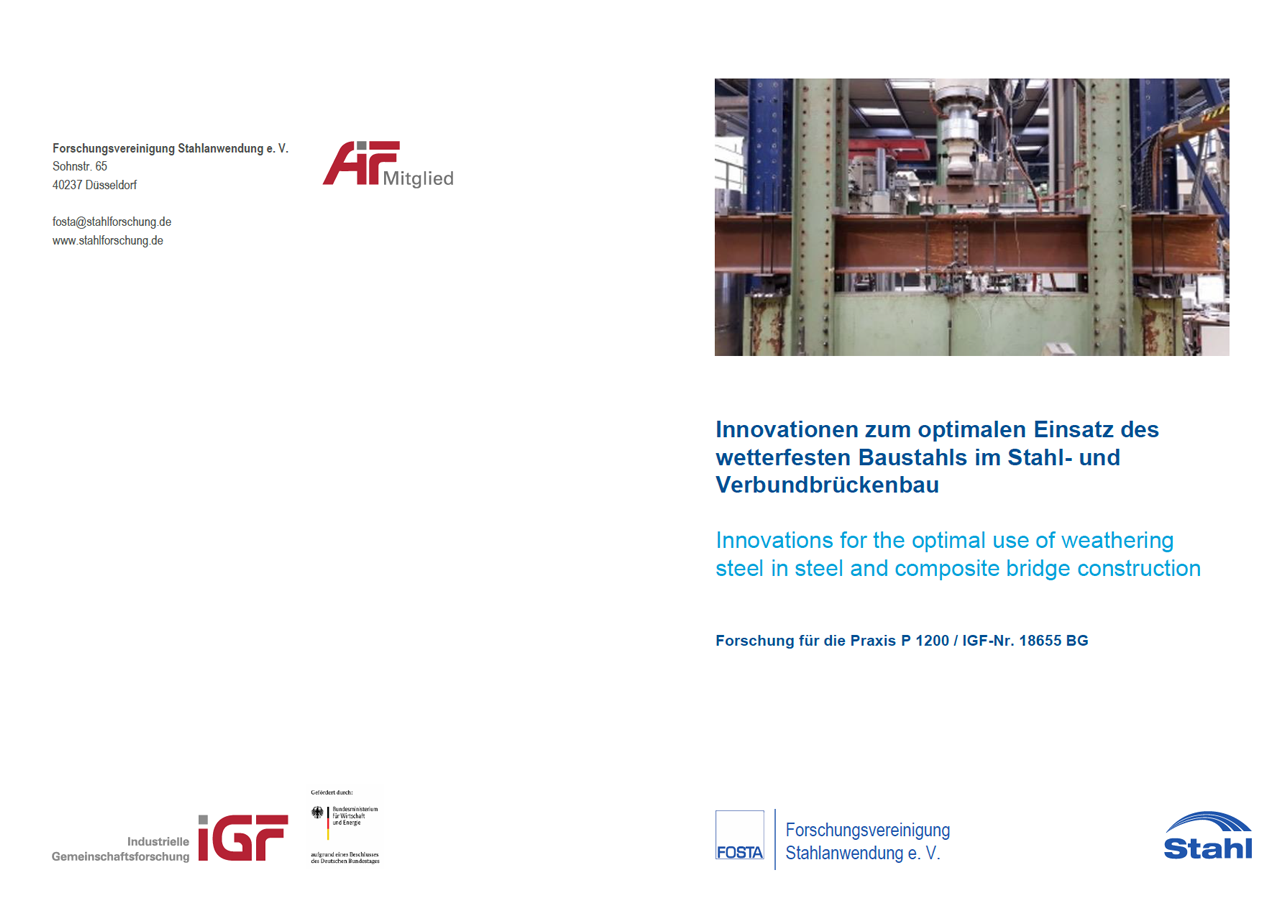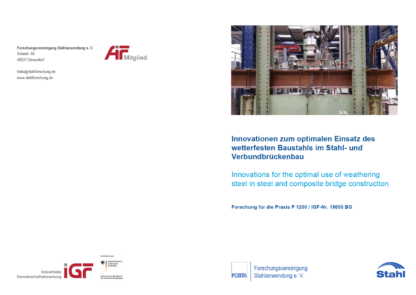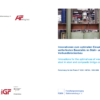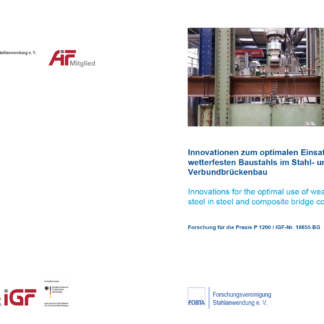Description
P 1200 – Innovations for the optimal use of weathering steel in steel and composite bridge construction
Weathering steel is characterized by a much higher corrosion resistance compared to unalloyed structural steel. On the surface of the unprotected weathering steel, natural corrosion processes form a tightly adhering, compact layer that slows down further corrosion. Due to the slower corrosion reaction of the weathering steel, the use under natural corrosion conditions is possible and permissible even without an additional corrosion protection system. Since many steel and composite bridges in Germany show age and construction-related damage, there is a great demand for durable and lowmaintenance replacement bridges. Due to its naturally occurring and maintenance- free corrosion protection, the corrosion-resistant weathering steel can provide this as a construction material in bridge building. Despite slightly higher material costs and wall thickness surcharges, weathering steel offers an economical and sustainable alternative.
The economic advantages of the weathering steel compared to the unalloyed structural steel are the elimination of the original costs and all subsequent costs for the initial coating and standard, repeated renewal of a conventional organic corrosion protection system, as well as the associated lower environmental impact.
The formation of the compact, firmly adhering protective layer, which is responsible for the significantly slower corrosion behaviour of weathering steel, is influenced by sulphur dioxide during the natural corrosion reaction. As a result of industrial structural change, the sulphur dioxide concentration in today’s atmosphere in Germany is very low, which has changed the formation of a corrosion-inhibiting oxide layer under natural atmospheric conditions. The investigations showed that in the changed low-sulphur dioxide atmosphere compact and inconspicuous oxide layers are still forming on weathering steel, which structurally do not require any changes in construction with weathering steel.
The visual detection of fatigue cracks required for bridge inspections is difficult or even impossible for the weathering steel because of the compact and firmly adhering oxide layer, since the corrosion-inhibiting layer should not be removed from the component surface due to its corrosion protection properties. In this research project, methods for the geometry-independent, contactless detection of cracks for bridges made of weathering steel were developed and verified on real bridge constructions. The investigations have shown that this method is suitable for practical use and can be successfully applied to steel structures without coating, as with uncoated weathering structural steel, even with a protective surface layer. Cracks and scratches on flat surfaces can be detected from a depth of 0.3 mm.
Published in:
January 2021
Authors:
Prof. Dr.-Ing. D. Ungermann, P. Hatke M.Sc., Prof. Dr.-Ing. habil. F. Walther, Dr.-Ing. M. Knyazeva, Dr.-Ing. S. Friedrich, Dipl.-Ing. (FH), SFI P. Lebelt




